
SURFACE AND INTERFACE ANALYSIS
Scope & Guideline
Elevating Insights into Chemistry and Physics
Introduction
Aims and Scopes
- Surface Characterization Techniques:
The journal emphasizes the development and application of various surface characterization techniques such as X-ray photoelectron spectroscopy (XPS), secondary ion mass spectrometry (SIMS), and atomic force microscopy (AFM). These methods are crucial for analyzing surface composition, structure, and properties. - Interfacial Phenomena:
Research published in the journal often explores interfacial phenomena, including adsorption, catalysis, and corrosion processes. Understanding these phenomena is vital for improving material performance in applications ranging from electronics to biomedical devices. - Materials Science and Engineering:
A significant focus of the journal is on the characterization and modification of materials, including metals, polymers, and nanomaterials. This includes studies on how surface modifications can enhance properties like adhesion, corrosion resistance, and optical performance. - Environmental and Energy Applications:
The journal features research that applies surface analysis techniques to environmental and energy-related challenges, such as photocatalysis for pollutant degradation and the development of energy materials, including batteries and fuel cells. - Theoretical and Computational Studies:
In addition to experimental work, the journal publishes theoretical and computational studies that provide insights into the atomic and molecular mechanisms governing surface and interface interactions.
Trending and Emerging
- Advanced Nanomaterials:
There is an increasing emphasis on the study of advanced nanomaterials, particularly their surface properties and interactions. This includes research on carbon nanotubes, graphene, and other two-dimensional materials, which are critical for applications in electronics, energy storage, and catalysis. - Sustainable and Eco-Friendly Approaches:
Recent publications are increasingly addressing sustainable practices in surface analysis and materials development. This includes research on environmentally friendly corrosion inhibitors and the application of natural materials for surface modifications. - In Situ and Real-Time Analysis:
The trend towards in situ and real-time surface analysis is gaining traction, with more studies utilizing advanced techniques that allow for the observation of surface phenomena under operational conditions. This is particularly relevant for battery research and catalysis. - Data-Driven Approaches and Machine Learning:
Emerging themes include the application of machine learning and data-driven methodologies to analyze and predict surface behavior. This trend reflects a broader shift towards integrating computational tools with experimental surface analysis. - Multi-Functional Surface Coatings:
Research on multi-functional coatings that serve multiple purposes—such as anti-corrosion, hydrophobicity, and enhanced adhesion—is on the rise. These coatings are crucial for various industrial applications, including automotive and aerospace industries.
Declining or Waning
- Corrosion Studies:
Although corrosion studies have traditionally been significant in the journal, there has been a noticeable decline in the number of publications focused solely on corrosion mechanisms and inhibitors. This may be due to a broader integration of corrosion analysis within materials science articles rather than isolated studies. - Traditional Surface Treatments:
Research on conventional surface treatment methods, such as basic coatings and simple chemical treatments, appears to be waning. The trend is shifting towards more innovative approaches, such as nanostructured coatings and biomimetic surfaces, which are gaining more attention in recent publications. - Basic Characterization of Well-Known Materials:
There seems to be a decrease in studies that focus on the basic characterization of widely known materials without novel findings or methodologies. The journal is moving towards more innovative applications and advanced materials rather than reiterating established knowledge.
Similar Journals
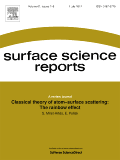
SURFACE SCIENCE REPORTS
Unveiling the Complexities of Surface PropertiesSURFACE SCIENCE REPORTS, published by Elsevier, is a premier journal dedicated to the field of surface science, exhibiting exceptional rigor and relevance in its contributions. With its ISSN 0167-5729 and E-ISSN 1879-274X, this journal has maintained an influential presence since its inception in 1981 and is set to continue its impactful trajectory through 2024. Recognized with a Q1 classification across multiple related disciplines—including Chemistry, Condensed Matter Physics, and Materials Science—it consistently ranks among the top journals, as evidenced by its impressive Scopus rankings, like #4 in Surfaces and Interfaces and #6 in Metals and Alloys. This positions the journal as a critical resource for researchers and professionals seeking cutting-edge insights into the interactions, properties, and applications of surfaces and interfaces. Although the journal follows a traditional subscription model, its comprehensive reviews and scholarly articles make it an invaluable asset for advancing knowledge in this dynamic field. By choosing to publish in SURFACE SCIENCE REPORTS, authors join a distinguished community pushing boundaries in the understanding and technological advancements related to materials and their surface characteristics, fostering collaboration and innovation worldwide.

APPLIED PHYSICS A-MATERIALS SCIENCE & PROCESSING
Illuminating the Path of Contemporary Materials ResearchApplied Physics A: Materials Science & Processing, published by Springer Heidelberg, is an esteemed academic journal that has been at the forefront of innovative research since its establishment in 1995. With a strong focus on the intersection of physics, materials science, and engineering, this journal explores cutting-edge developments and applications that influence contemporary materials research. Categorized in the Q2 quartile across both Chemistry and Materials Science, it boasts respectable rankings in Scopus, affirming its influence and reach within the academic community. Although primarily a subscription-based journal, it is dedicated to disseminating high-quality research findings that advance our understanding in these fields. Researchers, professionals, and students alike can benefit from the journal's commitment to publishing comprehensive studies, methodological advancements, and insightful reviews that push the boundaries of knowledge in materials science.
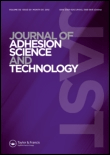
JOURNAL OF ADHESION SCIENCE AND TECHNOLOGY
Unveiling the Mechanics of Adhesion Technology.Journal of Adhesion Science and Technology is a distinguished publication within the fields of Chemistry, Materials Science, and Engineering, published by the reputable Taylor & Francis Ltd. Since its inception in 1987, the journal has been pivotal in advancing the understanding of adhesion mechanisms, technologies, and applications, boasting a conversion period extending to 2024. With a commendable impact factor and rankings placed in the Q2 category across various relevant domains, including Mechanics of Materials and Materials Chemistry, it offers a robust platform for scholars and practitioners alike. While currently not an open-access journal, it provides multiple access options, ensuring that vital research in adhesion science remains accessible to those dedicated to innovation and practical improvements in material interactions. This journal not only promotes empirical research but also encourages interdisciplinary collaboration, making it essential reading for researchers, industry professionals, and students eager to contribute to this dynamic field.
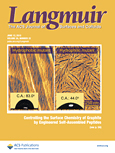
LANGMUIR
Pioneering Insights in Condensed Matter and SpectroscopyLANGMUIR is a prominent peer-reviewed journal published by the American Chemical Society, serving as a vital platform for research in various fields, including condensed matter physics, materials science, electrochemistry, and spectroscopy. With an ISSN of 0743-7463 and an E-ISSN of 1520-5827, this journal has established itself as a reputable source of cutting-edge scientific findings since its inception in 1985. Recognized for its rigorous academic standards, LANGMUIR holds significant ranking positions, including Q1 in condensed matter physics and spectroscopy, and Q2 categories in electrochemistry and materials science, reflecting its impactful contributions to these disciplines. Although the journal does not currently offer open access, it continues to foster collaboration and discussion among researchers by publishing high-quality articles that explore the frontiers of chemistry and physics. By engaging with LANGMUIR, readers can stay informed about the latest advances in surface and interface science, making it an essential resource for professionals, researchers, and students dedicated to these fields.

Surfaces is an esteemed academic journal published by MDPI in Switzerland, operating as an open access platform since 2018. With an E-ISSN of 2571-9637, this journal focuses on the interdisciplinary advancements in the fields of chemistry, materials science, and physics, particularly in the domain of surfaces and interfaces. As a testament to its scholarly impact, Surfaces is ranked in the second quartile for multiple categories as of 2023, including Chemistry (miscellaneous), Materials Science (miscellaneous), Surfaces and Interfaces, as well as Surfaces, Coatings and Films, showcasing its relevance within these disciplines. Researchers and professionals seeking to disseminate and acquire knowledge on the latest innovations can benefit from the journal's rigorous peer-review process and commitment to quality, ensuring visibility and accessibility for current developments in surface technology and material interactions. With a growing archive from 2019 to 2024, Surfaces stands out as a vital resource for the academic community.
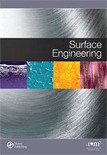
SURFACE ENGINEERING
Innovating at the Intersection of Science and EngineeringSURFACE ENGINEERING, published by SAGE Publications Inc, is a premier international journal dedicated to the advancement of knowledge in the fields of material surface science and engineering. With an ISSN of 0267-0844 and E-ISSN 1743-2944, this esteemed journal has been a critical resource since its inception in 1985, and continues to thrive through 2024. Recognized for its impactful contributions, SURFACE ENGINEERING achieves notable rankings in several categories including Q1 in Conservation and Q2 in key areas such as Condensed Matter Physics and Materials Chemistry. The journal serves a diverse audience of researchers, professionals, and students, providing them with insightful research articles, reviews, and technological developments that drive innovation in surface coatings, materials chemistry, and related disciplines. Although the journal follows a traditional subscription model, it remains an essential platform for disseminating crucial findings and fostering collaborations within the scientific community.
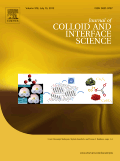
JOURNAL OF COLLOID AND INTERFACE SCIENCE
Shaping the Future of Colloid and Interface ScienceJOURNAL OF COLLOID AND INTERFACE SCIENCE, published by Academic Press Inc, Elsevier Science, is a premier peer-reviewed journal that has been a cornerstone in the fields of colloid, surface chemistry, and biomaterials since its inception in 1966. With a strong impact in its respective disciplines, the journal holds a prestigious status in quartile rankings, including Q1 in Biomaterials, Colloid and Surface Chemistry, Electronic, Optical and Magnetic Materials, as well as Surfaces, Coatings, and Films for 2023. Its outstanding Scopus rankings, such as #4 in Colloid and Surface Chemistry and #6 in Surfaces, Coatings and Films, highlight its vital role in advancing research and understanding in these cutting-edge areas. Although not an open-access journal, it provides valuable insights and advancements that cater to an audience of researchers, professionals, and students aiming to push the boundaries of material science. As it continues to publish high-quality research through 2025 and beyond, the journal remains an essential resource for those involved in the exploration of the interactions between particles and surfaces.
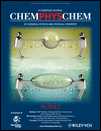
CHEMPHYSCHEM
Advancing the Frontiers of Chemistry and PhysicsCHEMPHYSCHEM, published by WILEY-V C H VERLAG GMBH in Germany, stands as a pivotal resource for researchers and professionals in the fields of Atomic and Molecular Physics, as well as Physical and Theoretical Chemistry. With a commendable impact across its converged years from 2000 to 2024, the journal is categorized in the second quartile (Q2) for both aforementioned fields according to the 2023 metrics, underscoring its significance in advancing scientific dialogue and research. CHEMPHYSCHEM is committed to disseminating high-quality, peer-reviewed research articles that delve into the intricate interplay between chemistry and physics, making it an essential read for students and experts alike. The journal does not currently offer open access options, allowing for focused scholarly discussions that cater to the academic community's needs. As reflected in its Scopus rankings, CHEMPHYSCHEM maintains respectable standings, ranking #84/224 and #90/189 in its respective categories, demonstrating its commitment to high-impact research and innovation.
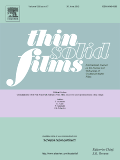
Thin Solid Films
Illuminating Innovations in Surface and Coating ResearchThin Solid Films, published by ELSEVIER SCIENCE SA, is a highly regarded journal in the fields of materials science and physics, specifically focused on the properties and applications of thin films. Established in 1967, this journal has been a leading platform for disseminating research on surfaces, coatings, and advanced materials. With its consistent publication through the notable HIndex of scholarly impact, this journal showcases a diverse range of studies ranging from electronic, optical, and magnetic materials to novel surface and interface engineering. In recent evaluations, Thin Solid Films has achieved significant rankings, including a Q2 position in Materials Chemistry and Metals and Alloys, reflecting its relevance and importance in ongoing scientific discourse. Although it does not offer open access, it provides a vital resource for researchers, professionals, and students seeking to advance their knowledge and expertise in thin film technology. The journal's commitment to quality and innovation makes it an essential publication for anyone engaged in the field.

Journal of Surface Investigation
Transforming Surface Studies into Tangible SolutionsThe Journal of Surface Investigation, published by PLEIADES PUBLISHING INC, is a key platform for scholars and practitioners in the fields of Nanoscience and Nanotechnology as well as Surfaces, Coatings, and Films. With an ISSN of 1027-4510 and an E-ISSN of 1819-7094, this journal serves as a repository for innovative research and comprehensive reviews, contributing significantly to the understanding and development of surface phenomena. Despite its recent Q4 ranking, it remains a crucial resource for emerging research, fostering advancements in material science. Targeting a diverse audience including researchers, professionals, and students, the journal encourages submissions that explore novel methodologies, applications, and theoretical frameworks in surface characterization and modification. It operates without an open access policy, thereby maintaining a focus on rigorous peer review and high-quality scholarly contributions. With research converging over several years, particularly from 1997-2001 and 2007-2024, the journal sustains a vital role in disseminating knowledge and stimulating innovative dialogue within the scientific community.